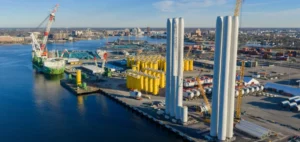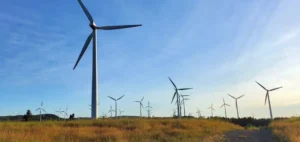According to Wood Mackenzie’s latest analysis, China has continued to strengthen its position as world leader in the wind energy sector in 2023. Goldwind maintained first place with 16.3 gigawatts (GW) of installed capacity, closely followed by Envision with 14.1 GW, recording the company’s most successful year ever. Vestas, the only Western manufacturer in the top five, ranks third with 11.5 GW connected to the grid.
Performance of Chinese and Western manufacturers
Chinese manufacturers Windey and MingYang ranked fourth and fifth, with 10.1 GW and 9.9 GW installed respectively. Worldwide, 54% of the wind power market was held by these five leading OEMs (Original Equipment Manufacturers). Outside China, Vestas dominated the market for the sixth year running, with over 10 GW installed, followed by Siemens Gamesa, which overtook General Electric for second place thanks to its success in the offshore sector.
Impact of provincial and supply chain objectives
China’s wind power boom is partly due to the massive renewable baseload with a 2024 deadline, boosting installations to an unprecedented 74.7 GW. This acceleration, combined with a mature supply chain and ambitious provincial targets, has propelled wind power deployment to an unprecedented level.
Pressure on Western manufacturers and market dynamics
Conversely, 2023 was a disappointing year for Western manufacturers, with notable financial losses in a wind market stagnating at 40 GW of installed capacity, marking a 3% decline on the previous year. Western manufacturers, faced with supply chain disruptions and quality problems, have shown little appetite for cutting prices to increase market share, as Endri Lico, senior analyst at Wood Mackenzie, points out.
“Western manufacturers demonstrated commercial discipline, showing little interest in cutting prices to increase market share. The year 2023 saw an improvement in financial performance as some supply chain disruptions eased, but quality and reliability issues emerged as another source of instability for Western OEMs.”
The year 2023 clearly demonstrated China’s growing dominance of the global wind energy market, supported by national strategic initiatives and technological advances. While Chinese manufacturers continue to gain ground, Western manufacturers have to navigate a more difficult market environment, marked by increased competition and operational challenges.






















